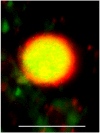Targeting CB2 receptors and the endocannabinoid system for the treatment of pain
- PMID: 19150370
- PMCID: PMC4549801
- DOI: 10.1016/j.brainresrev.2008.12.003
Targeting CB2 receptors and the endocannabinoid system for the treatment of pain
Abstract
The endocannabinoid system consists of the cannabinoid (CB) receptors, CB(1) and CB(2), the endogenous ligands anandamide (AEA, arachidonoylethanolamide) and 2-arachidonoylglycerol (2-AG), and their synthetic and metabolic machinery. The use of cannabis has been described in classical and recent literature for the treatment of pain, but the potential for psychotropic effects as a result of the activation of central CB(1) receptors places a limitation upon its use. There are, however, a number of modern approaches being undertaken to circumvent this problem, and this review represents a concise summary of these approaches, with a particular emphasis upon CB(2) receptor agonists. Selective CB(2) agonists and peripherally restricted CB(1) or CB(1)/CB(2) dual agonists are being developed for the treatment of inflammatory and neuropathic pain, as they demonstrate efficacy in a range of pain models. CB(2) receptors were originally described as being restricted to cells of immune origin, but there is evidence for their expression in human primary sensory neurons, and increased levels of CB(2) receptors reported in human peripheral nerves have been seen after injury, particularly in painful neuromas. CB(2) receptor agonists produce antinociceptive effects in models of inflammatory and nociceptive pain, and in some cases these effects involve activation of the opioid system. In addition, CB receptor agonists enhance the effect of mu-opioid receptor agonists in a variety of models of analgesia, and combinations of cannabinoids and opioids may produce synergistic effects. Antinociceptive effects of compounds blocking the metabolism of anandamide have been reported, particularly in models of inflammatory pain. There is also evidence that such compounds increase the analgesic effect of non-steroidal anti-inflammatory drugs (NSAIDs), raising the possibility that a combination of suitable agents could, by reducing the NSAID dose needed, provide an efficacious treatment strategy, while minimizing the potential for NSAID-induced gastrointestinal and cardiovascular disturbances. Other potential "partners" for endocannabinoid modulatory agents include alpha(2)-adrenoceptor modulators, peroxisome proliferator-activated receptor alpha agonists and TRPV1 antagonists. An extension of the polypharmacological approach is to combine the desired pharmacological properties of the treatment within a single molecule. Hopefully, these approaches will yield novel analgesics that do not produce the psychotropic effects that limit the medicinal use of cannabis.
Figures


References
-
- Agarwal N, Pacher P, Tegeder I, Amaya F, Constantin CE, Brenner GJ, Rubino T, Michalski CW, Marsicano G, Monory K, Mackie K, Marian C, Batkai S, Parolaro D, Fischer MJ, Reeh P, Kunos G, Kress M, Lutz B, Woolf CJ, Kuner R. Cannabinoids mediate analgesia largely via peripheral type 1 cannabinoid receptors in nociceptors. Nat. Neurosci. 2007;10:870–879. - PMC - PubMed
-
- Alexander JP, Cravatt BF. The putative endocannabinoid transport blocker LY2183240 is a potent inhibitor of FAAH and several other brain serine hydrolases. J. Am. Chem. Soc. 2006;128:9699–9704. - PubMed
-
- Anand U, Otto WR, Sanchez-Herrera D, Facer P, Yiangou Y, Korchev Y, Birch R, Benham C, Bountra C, Chessell IP, Anand P. Cannabinoid receptor CB2 localisation and agonist-mediated inhibition of capsaicin responses in human sensory neurons. Pain. 2008;138:667–680. - PubMed
-
- Aung MM, Griffin G, Huffman JW, Wu MJ, Keel C, Yang B, Showalter VM, Abood ME, Martin BR. Influence of the N-1 alkyl chain length of cannabimimetic indoles upon CB1 and CB2 receptor binding. Drug Alcohol Depend. 2000;60:133–140. - PubMed
Publication types
MeSH terms
Substances
Grants and funding
LinkOut - more resources
Full Text Sources
Other Literature Sources
Medical
Research Materials

